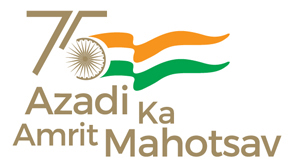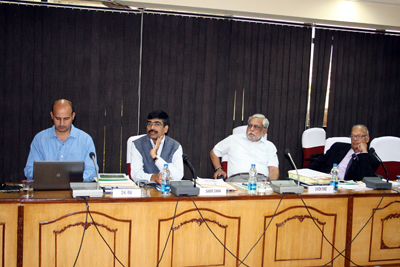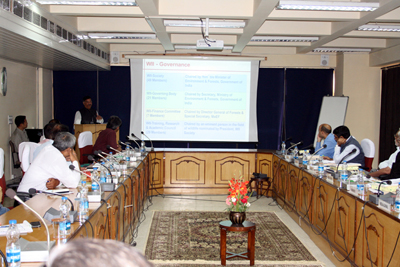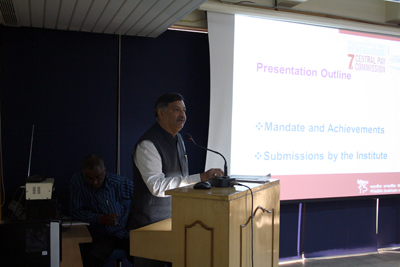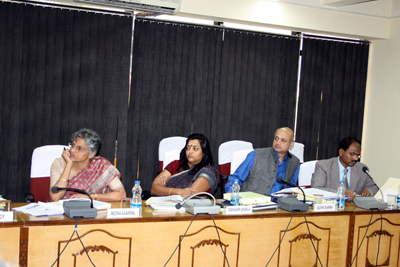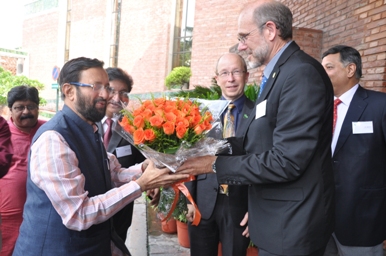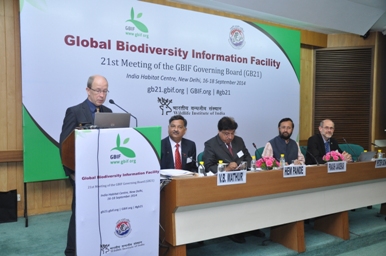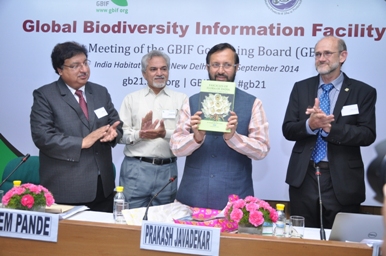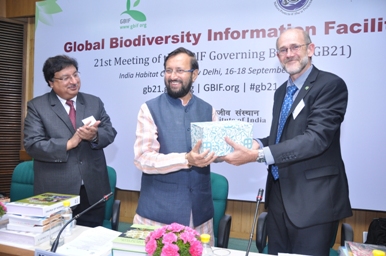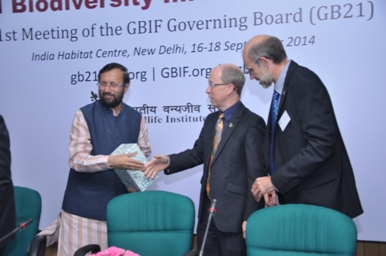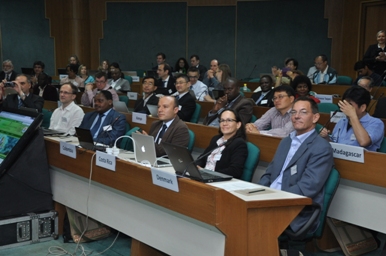Latest Events / News
-
Release of TIGER~MEETR – 2015 : Measuring the Management Effectiveness Evaluation of Tiger Reserves in India (2014)
 The Management Effectiveness Evaluation (MEE) process is a global framework to evaluate the performance of protected areas. India is among the select countries in the world that has institutionalized the MEE process for its network of protected areas. India has not only independently assessed the effectiveness of 28 tiger reserves in 2006, but has taken this process forward, by extending this evaluation in 2010 to 39 tiger reserves and in 2014 to 43 tiger reserves. The outcomes of this assessment are encouraging and despite all odds, Field Directors and front-line staff are putting up a valiant effort to conserve our natural heritage. There has been an overall improvement in the overall MEE score of all 43 tiger reserves from 65 percent in 2010 to 69 percent in 2014.
The Management Effectiveness Evaluation (MEE) process is a global framework to evaluate the performance of protected areas. India is among the select countries in the world that has institutionalized the MEE process for its network of protected areas. India has not only independently assessed the effectiveness of 28 tiger reserves in 2006, but has taken this process forward, by extending this evaluation in 2010 to 39 tiger reserves and in 2014 to 43 tiger reserves. The outcomes of this assessment are encouraging and despite all odds, Field Directors and front-line staff are putting up a valiant effort to conserve our natural heritage. There has been an overall improvement in the overall MEE score of all 43 tiger reserves from 65 percent in 2010 to 69 percent in 2014. Shri Prakash Javadekar, Minister of State (Independent Charge) Environment, Forests & Climate Change, Government of India released the MEE report on 20 January, 2015. He expressed happiness on the overall performance of the tiger reserves and urged the managers of the tiger reserves to closely monitor the performance of the 31 ‘headline indicators’ used in the MEE process
Glimpses of the function for the Release of TIGER~MEETR – 2015 20 January, 2015
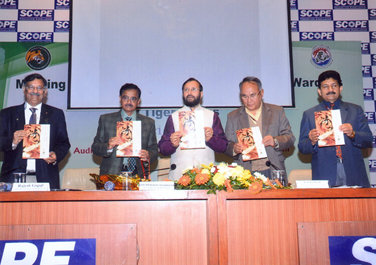
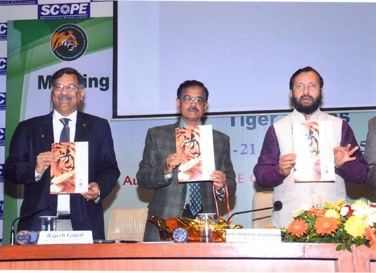
Download brochure of MEE~TR 2015 (15.7 mb)
Last Updated: January 30, 2015 -
Special Certificate Course on Coastal and Marine Biodiversity and Protected Area Management for field-level staff of the Forest Departments from January 12 to February 6, 2015 at Tarkarli, Malvan, Maharashtra
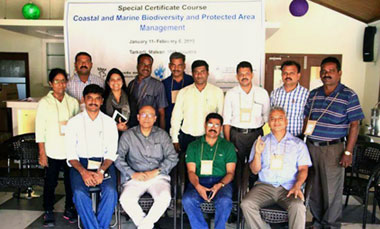 “Conservation and Sustainable Management of Coastal and Marine Protected Areas (CMPA)” project of the Indo-German Biodiversity Programme of GIZ aims at strengthening capacities of key training and learning organizations relevant to Marine Protected Areas (MPAs). In this context, a “Special Certificate Course on Coastal and Marine Biodiversity and Protected Area Management” for field-level staff of the Forest Departments from January 12 to February 6, 2015 at the Indian Institute of Scuba Diving and Aquatic Sports (IISDA) at Tarkarli, in Malvan Maharashtra is being jointly organized by the Wildlife Institute of India and Deutsche Gesellschaft für Internationale Zusammenarbeit (GIZ) GmbH. This course is intended to enable the participants to have a sound understanding of the concepts and issues related to managing coastal and marine biodiversity, coastal and marine protected areas, ecological and socio-political context, conservation approaches and legal-policy framework between terrestrial and coastal marine PAs, as well as to acquire necessary skills to conduct assessment and monitoring of coastal and marine habitats and species and prepare field reports, and develop-under supervision-operational plan for MPAs based on management effectiveness guidelines.
“Conservation and Sustainable Management of Coastal and Marine Protected Areas (CMPA)” project of the Indo-German Biodiversity Programme of GIZ aims at strengthening capacities of key training and learning organizations relevant to Marine Protected Areas (MPAs). In this context, a “Special Certificate Course on Coastal and Marine Biodiversity and Protected Area Management” for field-level staff of the Forest Departments from January 12 to February 6, 2015 at the Indian Institute of Scuba Diving and Aquatic Sports (IISDA) at Tarkarli, in Malvan Maharashtra is being jointly organized by the Wildlife Institute of India and Deutsche Gesellschaft für Internationale Zusammenarbeit (GIZ) GmbH. This course is intended to enable the participants to have a sound understanding of the concepts and issues related to managing coastal and marine biodiversity, coastal and marine protected areas, ecological and socio-political context, conservation approaches and legal-policy framework between terrestrial and coastal marine PAs, as well as to acquire necessary skills to conduct assessment and monitoring of coastal and marine habitats and species and prepare field reports, and develop-under supervision-operational plan for MPAs based on management effectiveness guidelines. 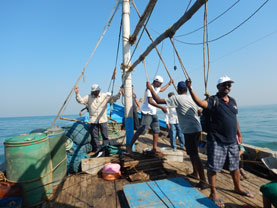
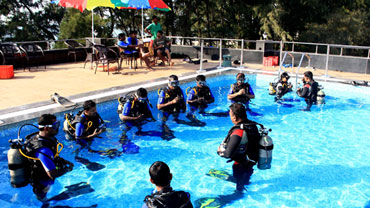
Last Updated: January 20, 2015 -
Guest Lecture on 'Urgent questions concerning climate change threat evaluation and conservation policy', 28th October, 2014.
Mr Paul Pearce-Kelly, Senior Curator (Invertebrates, Lower Vertebrates and Research), Zoological Society of London (ZSL) and Chair, World Association of Zoos and Aquariums (WAZA)/Conservation Breeding Specialist Group (CBSG) Climate Change Task Force, and Leader, Horizon Scanning for Emerging Climate Change Challenges Work Theme of the IUCN Climate Change Specialist Group, delivered a Guest Lecture on 'Urgent questions concerning climate change threat evaluation and conservation policy' on 28th October, 2014 at the Wildlife Institute of India (WII).
Mr Pearce-Kelly summarized the engagement progress to date regarding IUCN’s Climate Change Specialist Group and the CBSG/WAZA Climate Change Task Force and shared concerns regarding a serious disconnect between actual threat severity and current threat recognition and conservation policy and how this situation can be addressed. He noted that though efforts to develop robust climate change threat evaluation and conservation response policy are making encouraging progress, incorporating sufficiently realistic impact considerations remains an urgent challenge. This task could be aided by an informal collaboration of relevant specialists to help test species and ecosystem evaluation efficacy in relation to best available climate change science. He expressed enthusiasm for collaborating with WII on evaluation initiatives particularly in relation to climate change in the context of the Himalaya. The lecture concluded with a vote of thanks and presentation of a memento to the guest speaker by Dr. V.B. Mathur, Director, WII.
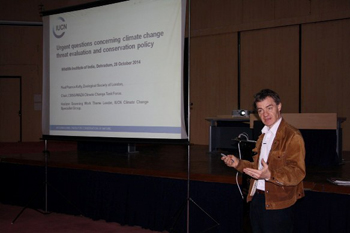
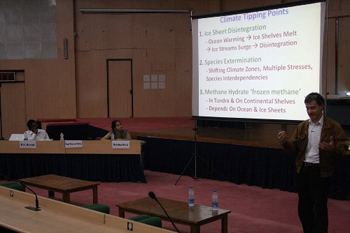
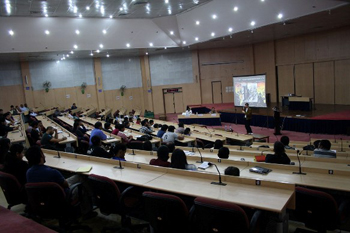
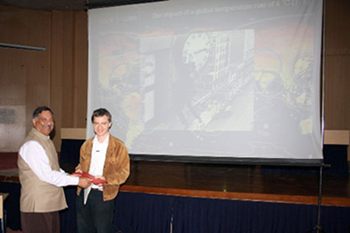
Last Updated: October 29, 2014 -
.

Every year Vigilance Awareness Week is celebrated throughout the country, wherein all the stakeholders are encouraged to fight corruption. Wildlife Institute of India (WII) marked the Vigilance Awareness Week 27 October – 1 November 2014 with the taking of a pledge on 27 October 2014 by the Institute’s staff led by Dr. P.K. Mathur, Dean, WII to eradicate corruption and remain vigilant and to work towards the growth and reputation of the Institute. (The text of the Pledge can be read at http://www.cvc.nic.in/vawp27102014.pdf ).
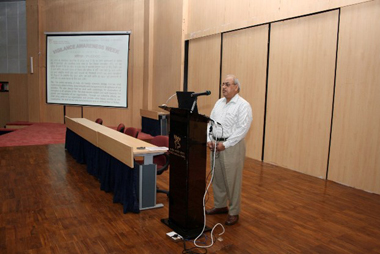
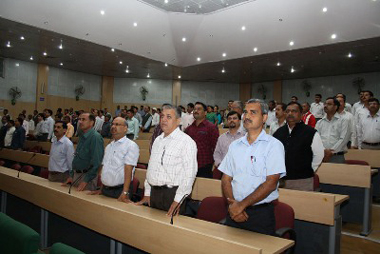
As part of the activities undertaken during the Vigilance Awareness Week, a seminar session on the issue of corruption was held at WII on 28 October 2014 wherein Dr. V.B. Mathur, Director, WII delivered the welcome address and the invited speaker Mrs. Vibha Puri Das, Former Secretary, Ministry of Tribal Affairs, Government of India delivered the keynote address. Dr. Mathur said that tackling corruption was a formidable task as it operated at multiple levels, assumed various forms – some implicit and some explicit. He said that WII as an academic institution was susceptible to different nuances of corruption, which could manifest in the form of plagiarism. He stressed on the need to develop and practice a ‘Zero tolerance’ towards this. He further noted that to tackle the usual forms of corruption in matters of procurement and recruitment, several concrete steps are being taken at WII. Limiting discretion, enhancing accountability and promoting transparency are well established processes to tackle corruption and all staff at WII must all work together to deal with corruption.

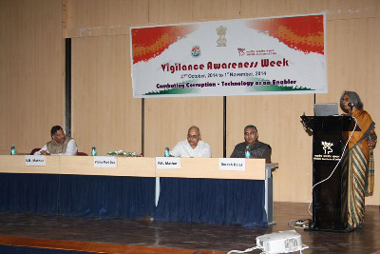
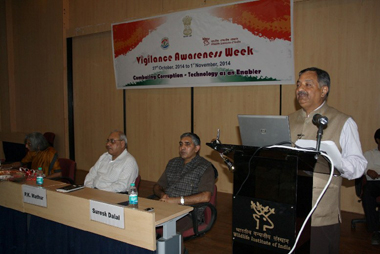

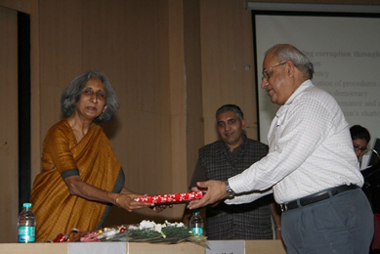
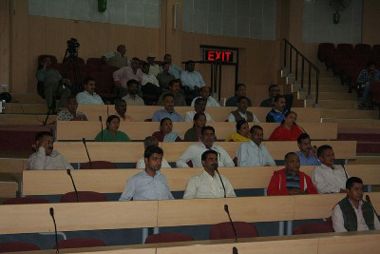
Mrs. Vibha Puri Das noted that India has been a signatory to the United Nations Convention Against Corruption (UNCAC) since 9 December 2005 for global cooperation amongst countries in every aspect of the fight against corruption, including prevention, investigation, and the prosecution of offenders. She highlighted key steps and actions undertaken in India in the fight against corruption in all spheres. With the new government at the centre realizing that leveraging of technology in the functioning of organizations can work effectively, the theme of this year’s celebrations has been ‘Combating Corruption – Technology as an Enabler’. The Session concluded with the presentation of a memento to the invited speaker by Dr. P.K. Mathur, Dean, WII and a vote of thanks delivered by Shri Suresh Dalal, Registrar, WII.
Last Updated: October 30, 2014 -
International Snow Leopard Day, 23rd October
International Snow Leopard Day, 23rd October - Press Release
This document, edited jointly by the conservation organizations represented in the Snow Leopard Network, establishes a scientific baseline and identifies priorities and best practices in protecting the endangered cat.
Concerns Remain
Despite the progress that’s being made for the snow leopard, the cat remains endangered. There is no accurate, range-wide population count; the most recent estimate from the Global Snow Leopard Ecosystem Protection Program in 2013 estimated the number of snow leopards remaining in the wild at a dangerously low 3920 – 6390.
The cat’s habitats, which are increasingly fragmented, continue to be under pressure from mining, large-scale development, and climate change. Populations of natural prey species are thought to be in decline as well. Poaching and retaliation killings by local herders who fear for their livestock are another major threat that remains very much acute.
Worldwide Effort Needed
In the last few years, the international community has made more significant steps to saving the snow leopard than ever before.It is crucial that those efforts be intensified in the coming decade, as the cat’s fate may indeed be decided by our generation.
- Press Release (109 kb)
- Map of 23 landscapes covering more than 500,000 sq km of snow leopard habitat identified to be secured by 2020 under the Global Snow Leopard and Ecosystem Protection Program
Plug-in: Download Adobe Acrobat Reader
Last Updated: May 25, 2015 -
Addendum 2014 to National Biodiversity Action Plan (NBAP) 2008 & A Panoramic View of India’s Presidency of CoP to CBD (2012–2014)
Addendum 2014 to National Biodiversity Action Plan (NBAP) 2008
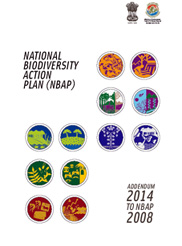 As a Party to the Convention on Biological Diversity (CBD) that mandates countries to prepare a national biodiversity strategy and action plan for implementing the Convention at the national level, India developed a National Policy and Macro-level Action Strategy on Biodiversity in 1999. Subsequent to the adoption of the National Environment Policy (NEP) in 2006, a National Biodiversity Action Plan (NBAP) was developed through a comprehensive inter-ministerial process in 2008. India’s NBAP is broadly aligned to the global Strategic Plan for Biodiversity 2011-2020. Using the Strategic Plan as a framework, India is among the select countries that have developed National Biodiversity Targets (NBTs) in harmony with the global Aichi Biodiversity Targets. India’s 12 National Biodiversity Targets and the associated indicators and monitoring framework now form an Addendum to the NBAP 2008. This document together with the NBAP 2008 forms the blueprint for biodiversity conservation in the country. The Addendum 2014 also presents important analyses and information on funding for biodiversity conservation in the country. The document highlights the linkages of India’s NBAP and NBTs with CBD’s Programme of Work on Protected Areas (PoWPA) as well as with the Global Strategy for Plant Conservation (GSPC). The Addendum 2014 to NBAP 2008 reiterates India’s commitment to conservation of biodiversity as a national priority recognising its crucial linkages with the livelihoods and well-being of her people.
As a Party to the Convention on Biological Diversity (CBD) that mandates countries to prepare a national biodiversity strategy and action plan for implementing the Convention at the national level, India developed a National Policy and Macro-level Action Strategy on Biodiversity in 1999. Subsequent to the adoption of the National Environment Policy (NEP) in 2006, a National Biodiversity Action Plan (NBAP) was developed through a comprehensive inter-ministerial process in 2008. India’s NBAP is broadly aligned to the global Strategic Plan for Biodiversity 2011-2020. Using the Strategic Plan as a framework, India is among the select countries that have developed National Biodiversity Targets (NBTs) in harmony with the global Aichi Biodiversity Targets. India’s 12 National Biodiversity Targets and the associated indicators and monitoring framework now form an Addendum to the NBAP 2008. This document together with the NBAP 2008 forms the blueprint for biodiversity conservation in the country. The Addendum 2014 also presents important analyses and information on funding for biodiversity conservation in the country. The document highlights the linkages of India’s NBAP and NBTs with CBD’s Programme of Work on Protected Areas (PoWPA) as well as with the Global Strategy for Plant Conservation (GSPC). The Addendum 2014 to NBAP 2008 reiterates India’s commitment to conservation of biodiversity as a national priority recognising its crucial linkages with the livelihoods and well-being of her people. The Wildlife Institute of India team comprising Dr. V.B. Mathur, Dr. K. Sivakumar, Dr. Malvika Onial, Dr. C. Ramesh, Mr. Yashaswi Singh, Ms. Biba Jasmine Kaur and Mr. Anant Pande, provided technical support in preparation of the Addendum 2014 to NBAP 2008.
Download (9.75 mb)
A Panoramic View of India’s Presidency of CoP to CBD (2012–2014)
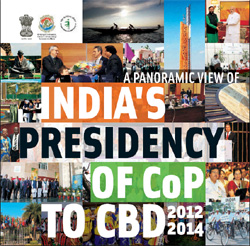 Subsequent to the hosting the Eleventh Conference of the Parties (CoP-11) to the Convention on Biological Diversity in Hyderabad in October 2012, India led the Presidency of CoP for a two-year period up to October 2014. The Presidency of the CoP led to an enhanced focus domestically on strengthening the implementation of biodiversity programmes and stimulated country-wide awareness on biodiversity issues. As a result, a number of activities relating to biodiversity, some of them quite unique, were taken up within as well as outside the government set-up. India has brought out a pictorial document, ‘A Panoramic View of India’s Presidency of CoP to CBD (2012–2014)’ that provides an overview of some of the important activities undertaken during India’s Presidency of CoP. This document was released at CoP-12 in Incheon, Republic of Korea on 13th October 2014. It provides information on India’s role in steering the CBD agenda through the meetings of the CoP Bureau and the Working Groups; contributions to activities under South-South cooperation; and activities and joint international initiatives with organisations including International Union for Conservation of Nature (IUCN), United Nations Development Programme (UNDP) and the German Agency for International Cooperation (Deutsche Gesellschaft für Internationale Zusammenarbeit GIZ). This pictorial document also provides details of outreach and awareness activities undertaken throughout the country by Ministries of the Government of India and a number of government and non-government organisations. It highlights some of the recent important conservation success stories such as that of the conservation of the Amur falcon, a migratory bird protected under the Convention on Migratory Species as well as national legislation in India. The document reflects India’s reaffirmation of the resolve to continually make positive and meaningful contributions to the biodiversity agenda at the international level.
Subsequent to the hosting the Eleventh Conference of the Parties (CoP-11) to the Convention on Biological Diversity in Hyderabad in October 2012, India led the Presidency of CoP for a two-year period up to October 2014. The Presidency of the CoP led to an enhanced focus domestically on strengthening the implementation of biodiversity programmes and stimulated country-wide awareness on biodiversity issues. As a result, a number of activities relating to biodiversity, some of them quite unique, were taken up within as well as outside the government set-up. India has brought out a pictorial document, ‘A Panoramic View of India’s Presidency of CoP to CBD (2012–2014)’ that provides an overview of some of the important activities undertaken during India’s Presidency of CoP. This document was released at CoP-12 in Incheon, Republic of Korea on 13th October 2014. It provides information on India’s role in steering the CBD agenda through the meetings of the CoP Bureau and the Working Groups; contributions to activities under South-South cooperation; and activities and joint international initiatives with organisations including International Union for Conservation of Nature (IUCN), United Nations Development Programme (UNDP) and the German Agency for International Cooperation (Deutsche Gesellschaft für Internationale Zusammenarbeit GIZ). This pictorial document also provides details of outreach and awareness activities undertaken throughout the country by Ministries of the Government of India and a number of government and non-government organisations. It highlights some of the recent important conservation success stories such as that of the conservation of the Amur falcon, a migratory bird protected under the Convention on Migratory Species as well as national legislation in India. The document reflects India’s reaffirmation of the resolve to continually make positive and meaningful contributions to the biodiversity agenda at the international level.The Wildlife Institute of India team comprising Dr. V.B. Mathur, Dr. K. Sivakumar, Dr. Malvika Onial, Dr. C. Ramesh and Mr. Yashaswi Singh, provided technical support in preparation of the document ‘A Panoramic View of India’s Presidency of CoP to CBD (2012–2014)’.
Download (23 mb)
Last Updated: October 14, 2014 -
Meeting with 7th Central Pay Commission
The Wildlife Institute of India had submitted a Memorandum to the 7th Central Pay Commission (CPC). The CPC invited WII team to interact with the members during their visit to Dehradun on 9th October, 2014. The 4 submissions made by the Institute in the Memorandum are (i) Modified Assured Career Progression Scheme; (ii) Provision of Non Functional Upgradation of Scientists in Wildlife Institute of India; (iii) Retirement Age of Scientists in Wildlife Institute of India; and (iv) Up-Gradation of Director, Wildlife Institute of India’s Position to Apex Scale in Government of India. The CPC appreciated the work done by the Institute and assured that due consideration will be given to the proposals submitted by the Institute.
Last Updated: October 10, 2014 -
Minister opens Meeting on Global Sharing of Biodiversity Data
Shri Prakash Javadekar, Minister of Environment, Forests and Climate Change opened (MoEFCC) 21st meeting of the Governing Board of Global Biodiversity Information Facility (GBIF) at the India Habitat Centre, New Delhi on 16th September, 2014.
In his welcome address Shri Hem Pande, Additional Secretary, MoEFCC & Head of the Indian Delegation said that he was pleased to note that delegates from over 30 countries and institutions had come for this meeting. He said that MoEFCC was committed to develop the science of biodiversity informatics and make best use of GBIF resources. In his inaugural address to the delegates, Shri Javadekar said “While India has emerged as a global powerhouse of information technology we have not yet made use of the full potential of biodiversity informatics in policy formulation and decision-making”. However, we stand committed to developing “biodiversity informatics” as an essential element of India’s economic, environment and social well-being. We are in the process of building a comprehensive and decentralized biodiversity information infrastructure to serve the national interests and to provide inter-operability with regional and global initiatives”. He further said that a lot of biodiversity data of Indian origin is with several natural history museums in the world and this valuable legacy data was needed by the Indian researchers. Several ongoing global and regional biodiversity informatics initiatives for sharing this biodiversity data with the countries of origin are gaining momentum. He requested GBIF and its partners to expedite and institutionalize the process of digital exchange of this data.
In a message to the governing board meeting, the executive secretary of the Convention on Biological Diversity (CBD), Braulio Dias emphasized that GBIF’s role was critical to improve the scientific knowledge needed in order to sustain healthy ecosystems.
“I therefore appeal, not only to this forum but also within the CBD constitutency, to recognize the benefits of a viable, active and strong GBIF, primarily to benefit countries in having access to information to guide their own sustainable development agenda,” Mr Dias said.
In his introduction to the three-day meeting in New Delhi, the GBIF Governing Board Chair Peter Schalk said that India had an important role to play in GBIF, and carried a global responsibility, being the second largest country in the world in human population, and containing a great wealth of biodiversity including 7% of the world’s mammal species, 12% of birds, 6% of reptiles, 5% of amphibians, 11% of fishes, and 6% of the flowering plants of the planet.
"India has a lot to offer to GBIF and the global biodiversity community in terms of data and biodiversity expertise,” Schalk commented. “In its turn, GBIF offers a good value proposition to India in terms of open data resources, ICT tools and international collaboration.”
In his own opening statement to the meeting, the GBIF Executive Secretary Donald Hobern praised India for developing a National Biodiversity Information Outlook, to provide a roadmap for developing a national infrastructure for biodiversity information.
“We live in an age in which we all increasingly depend on instant access to up-to-date digital information on finances, weather, transport and air quality,” Hobern said. “We have just as much need to be able to track the status of biodiversity and how its patterns change over time. GBIF at the global level and GBIF nodes at the national level are all working together to create this infrastructure and to support our societies with immediate access to the best available knowledge of natural systems.”
On this occasion ShriPrakashJavedekar, Minister of Environment, Forests and Climate Change also released 3 Botanical Survey of India publications viz. “Flora of Lower Subansiri District, Arunachal Pradesh State”, “Fascicles of flora of India” and “VanapatiVani”. He also released 4 Zoological Survey of India publications viz. “Fauna of Achanakmar-Amarkantak Biosphere”, “Freshwater Crabs”, “Gorgonians in Andaman and Nicobar Island” and “Fauna of State of Karnataka”. He also launched the re-engineered websites of the Botanical and Zoological Survey of India.
Last Updated: September 16, 2014 -
Himalayan Day Celebrations at the Wildlife Institute of India on 9th September, 2014
 The Himalayan Day was celebrated at the Wildlife Institute of India, Dehradun on 9th September in which over 50 participants including the scientists, researchers, and students participated. Dr. Ravi Chopra, Director, Peoples Science Institute, Dehradun was the Chief Guest on this occasion and he delivered a talk on “Sustainable Development in the Himalaya”.
The Himalayan Day was celebrated at the Wildlife Institute of India, Dehradun on 9th September in which over 50 participants including the scientists, researchers, and students participated. Dr. Ravi Chopra, Director, Peoples Science Institute, Dehradun was the Chief Guest on this occasion and he delivered a talk on “Sustainable Development in the Himalaya”. Dr. S. Sathyakumar, Scientist-G of the Institute, welcomed Dr. Ravi Chopra and participants, providing a brief background of WII’s research and conservation initiatives in the Himalaya and why we celebrate the Himalayan Day.
Dr. Ravi Chopra in his talk presented an overview of all the environmental and social problems in the Himalayas region due to the rapid pace of ill-planned development. He stressed the importance of sustainable development through community participation, better risk preparedness and environmental friendly livelihoods.
Dr. Ravi Chopra and his team have innovated creative approaches to put science and technology in the service of India’s poorest people, through capacity building of the local communities, helping them to prepare their own development, implement projects, and then manage the assets created.
The 9th of September was chosen as Himalayan Day in 2010 by individuals who were concerned about the conservation of the Himalayan ecosystems to bring awareness amongst the common people to save the Himalaya which is severely threatened due to increasing human activities. Since then, many institutions and organizations in the Himalaya celebrate this day as “Himalayan Day” and undertake various discussion forums and awareness creation activities.
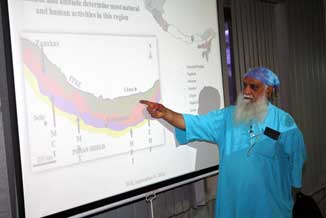
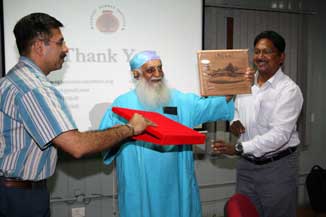
Last Updated: September 10, 2014 -
Commencement of XXXVI Post Graduate Diploma Course
XXXVI Post Graduate Diploma Course began on 1st September 2014. 10 month long Diploma Course comprises teaching at the Institute and field tours to different protected areas of the country, and also foreign exposure tour. Wildlife Institute of India received overwhelming response from States and finally nominations of 21 officers were accepted. Out of these 21 participants 17 officers are from 14 Indian States and 4 are foreign nationals from Bangladesh. Seven officers have joined the course after completing their induction training during the current year-2014. On the first day a brief introductory session with Director, faculty and sectional heads of Wildlife Institute of India was organized. Dean, Faculty of Wildlife Sciences in his address to the officers emphasized the need of scientific training for managing natural resources. The Director, wildlife Institute of India advised young officer trainees to make best use of the training, and develop specialization in their respective fields.
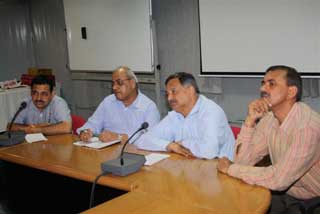
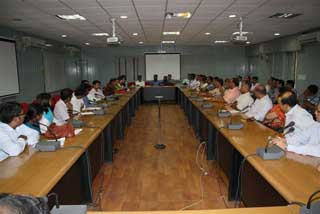
Last Updated: September 4, 2014

